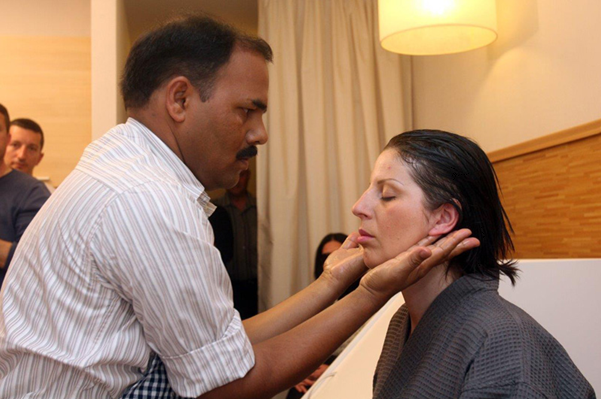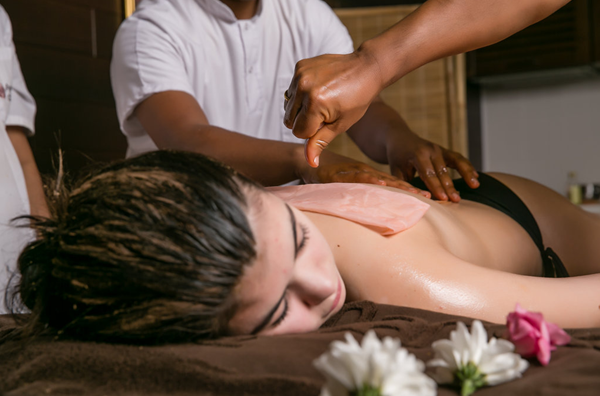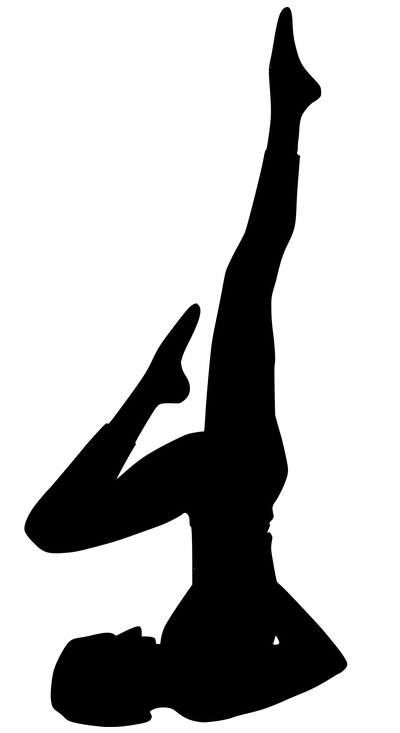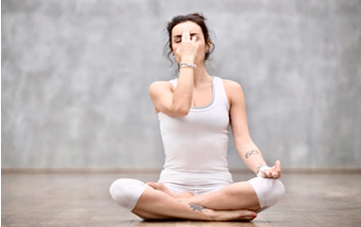One of these diseases is the obsessive-compulsive syndrome, called ACS for short.
Nature of the syndrome
ACS is a cognitive-behavioral disorder, which occurs for an unknown reason in the human body. There are data from research that show that part of its nature is genetic, but in general things are much more complex. In principle, it is possible for ACS to develop acutely and temporarily as a result of a particular trauma, but more often it is a chronic condition that can be kept in a latent phase with treatment.
According to Ayurveda, most cases of ACS (Ata TV Abhinivesha) are related to unbalanced vata dosha. This is the energy of air and ether, which, if gets out of control, can become a powerful element.
That is why Indian doctors in practice prescribe treatment only after establishing the individual energy nature of each of their patients.
Diagnosis
In the most classic case, the syndrome has a complex nature. On the one hand, it is characterized by obsessive thoughts (“obsessions”), which we feel we can not get out of our heads, and on the other hand, they lead to a kind of repetitive actions, the so-called. “Compulsions” or “rituals” that we feel compelled to perform. However, the symptoms may be completely atypical in each case.
Less than 3 percent of the population suffers from obsessive-compulsive disorder in its pure form. However, many more people, about 10 percent of the population, experience 3 or more symptoms typical of ACS as part of other chronic or transient conditions.
And in fact, each of us has experienced at least once some of the most characteristic manifestations of the disorder:
- obsessive thoughts
- an overwhelming desire to clean / wash hands (especially as part of health concerns).
Modern psychology has developed a number of “quick” tests, with which we can determine whether we have the primary profile of a person with ACS. Of course, for a final diagnosis we need the help of a psychiatric specialist. The condition has points of contact with other syndromes such as bipolar, anxiety disorder and others.
Ayurveda treatment

In psychiatry, antidepressants are prescribed to treat ACS, as well as cognitive behavioral therapy. However, this in itself may not be enough to overcome the problems on a lasting basis. In addition medicines often give side effects Ayurveda is often chosen for additional course of treatment.
Its methods are much less non-invasive. Depending on the severity of each case, it can be treated even entirely with natural remedies of Indian medicine, or require it to be taken as an adjunct to drug therapy. In addition, Indian medicine can help us to protect ourselves from the negative side effects of taking antidepressants.
Massages
For ACS, abhyanga oil massage is recommended. After visiting a specialist and learning, one can apply it as a self-massage technique, which is quite convenient.

Abhyanga is done by dousing the whole body with warmed Ayurveda oils and essences. We start from the top of the head and continue downwards until we reach the feet. Then we start rubbing in a circular motion.
Herbs
Ashwagandha is one of the most highly valued herbs in Indian science for health. The decoction of it has many useful properties, including vitanolides. They help the activity of GABA – also called gamma aminobutyric or gamma aminobutyric acid. It is a neurotransmitter that has a beneficial effect on our central nervous system.
To make the treatment of ACS with Ayurveda effective, we need to change some key aspects of our lives. This affects our nutrition, physical and spiritual culture. It is recommended to normalize our daily rhythm by going to bed and getting up at the same time.
Yoga exercises
Ayurveda uses yoga as a way to strengthen and consolidate the effect of treatment of various diseases. Asanas help us strengthen the body and release the accumulated toxin deposits. The following are recommended for concomitant therapy as part of ACS treatment:
Shavasana
The posture of the deceased – for many people at first glance it seems as if we are just lying on the floor. However, it is important that our palms are facing the ceiling, that our hands do not touch the body. The legs are also slightly apart. The head does not leaves aside. The posture teaches us patience, and the key in it is to stay calm in the asana for as long as possible.
Try to let the thoughts just run through your head, instead of concentrating on any of them – this includes positive thoughts and emotions. Start with 2-3 minutes a day, which may seem deadly long at first. Extend your stay as long as you can. Use shavasana for the beginning and final relaxation in your practices.
Lotus
The lotus position is a little harder to perform for beginner yogis. There are no problems in the beginning just sitting cross-legged as we feel comfortable. The purpose of the lotus is to help us keep our backs straight during a longer and deeper meditation, in which we will learn to fall only later.
The same is true as in the previous asana – let the thoughts pass without stopping. Use the meditation posture.
Cat-cow
We start from a neutral position on all fours. “Cow” is performed by opening the shoulders and slowly looking up with a breath. At the same time our back bends down and the hips are up. “Cat” is the opposite position, which we pass with the exhalation – we reduce the gaze and head down, shrugging the shoulders and twisting the spine up, and the hips retract. We perform one after the other eight to ten times as part of our daily yoga practice.
Matyaasana
In yoga this is the position of the fish (the name comes from the Sanskrit word for fish – “matsya”). This asana is most suitable when we suffer from ACS, developed as a result of hypothyroidism.
We perform it by starting from a supine position. First we stand on our elbows, watching the toes point upwards in the counter-position. Stay like that for a moment, then with a deep breath we inflate the abdomen and chest forward and gently relax the head back.
If we can, we put the top of the top of the mat and stay like that 20 – 30 seconds. The weight should be borne by the elbows and not create tension on the head. This asana opens the throat chakra, which is very important in combating pituitary problems.
Sarvangasana (candle)

When performing this asana, we must not forget that we are doing yoga, not rhythmic gymnastics. Here the goal is to direct the blood circulation to the upper part of the body.
Do not strain your toes and do not try to stand out like a string. We just need to be comfortable and relax in the pose. Therefore, when you feel balance in it, try to close your eyes. Stay like that for a few minutes, at first one or two, but less is enough.
Keep in mind that inverse poses should be avoided during the menstrual cycle.
Yoga for breathing

Accumulation of stress worsens the condition in ACS sufferers. We can limit and control it by practicing regular yoga meditation and pranayama breathing exercises.


